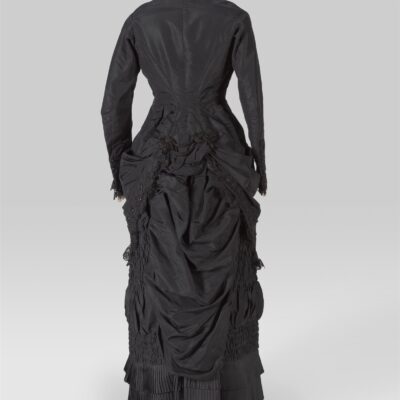
EFHA World 08.09.2023
02.08.2018
1900sexhibitionphotographytumblr curation
An introduction to the first half of the curation in collaboration with Photoconsortium
Since the very beginnings of modern horse racing, the tracks were used as a ‘catwalk-avant-la-lettre’ by ladies and fashion designers alike. Horse races were a golden opportunity for high society women to spot and to don fashionable outfits, while couturiers dispatched dressed in their latest creations. Fashion shows were not yet institutionalized, yet these events allowed for dresses to be seen by a wide public and often created a sensation and a genuine media hype. Especially in France, host to such legendary races as those in Auteuil, Longchamp and Chantilly, ladies and models ‘promenading’ in high-end fashion thoroughly influenced the development of the fashion industry and the growing reputation of Paris as the fashion capital of the world.
In this first of a double curation showing carefully selected images portraying high society dress at the races, we focus on French fashion of the 1900s and 1910s. Immediately, these images reveal that women’s clothes were not that much about being functional, but were – to an ever-increasing degree – a statement of style, status and personality.
This is especially true for couturiers, who saw in these public events the best stage to present their ideas and creations to a public as wide as possible. Presentations of new collections were in fact made behind the gilded and closed doors of the ateliers, to which only women of the high society had access, but the growing spending power of the middle class brought designers to cater another audience. They decided to use the street – and indeed, the races – as their very first ‘catwalk’. They hired models, dressed them with their most daring and flamboyant designs and asked them to merge into these public arenas, in order to show the ensembles and catch the attention of the crowds. Apart from spreading the word about their name and work, this technique allowed them to also test the popularity of their ideas in terms of style and fashion, and to better understand in which direction they should move to respond to the desires and needs of their new and ‘modern’ clientele.
Throughout this picture selection, the predominance of the 18th-century-inspired ‘lingerie dress’, adorned with embroidery, lace, pin tucks, ruffles and ribbons, is striking. While white and pastels range among the favorite colors, many a picture shows bold contrasts, often created by a black belted ribbon or by multilayered, draped skirts.
While the late-19th century S-silhouette – created by the ‘mono-bosom’ corset- is still worn by some ladies, others follow the newer trend of wearing smooth undergarments for an elongated, slim figure. Different styles of trimmings can be spotted too: from the early 20th-century voluminous ruffles, gathering, and ruching to the slightly later flat embroidery, ribbons and lace. While such dresses were also worn on less formal occasions, events such as the races prompted an elaborately accessorized attire with matching long gloves, heavily ornamented hats, big hairdos and lingerie-style parasols.
The curation starts today – visit the EFHA Tumblr to see the amazing images coming from the archive selected by the guest curator Sofie Taes.
—
About the Guest Curator:
Sofie Taes has been working as an online curator of early photographic collections for the Europeana Photography Thematic Collection for several years. She is affiliated both with Leuven university (KU Leuven, Belgium) and PHOTOCONSORTIUM: an expert hub on historical photography, uniting the experience and knowledge of photography professionals from all over Europe.